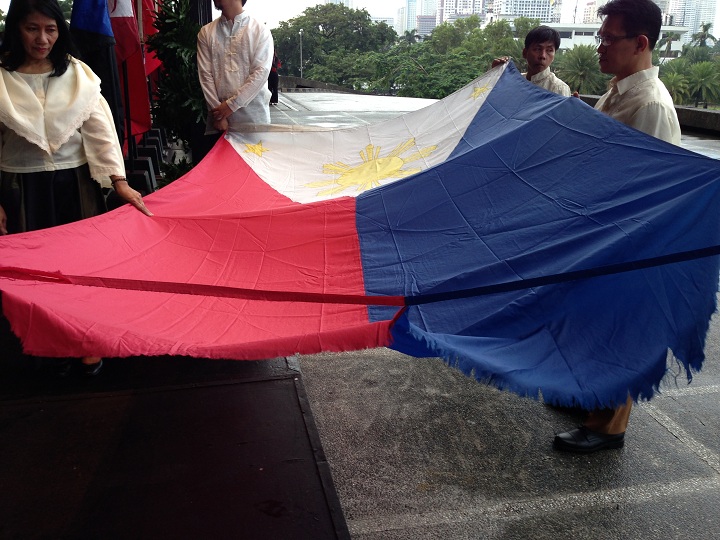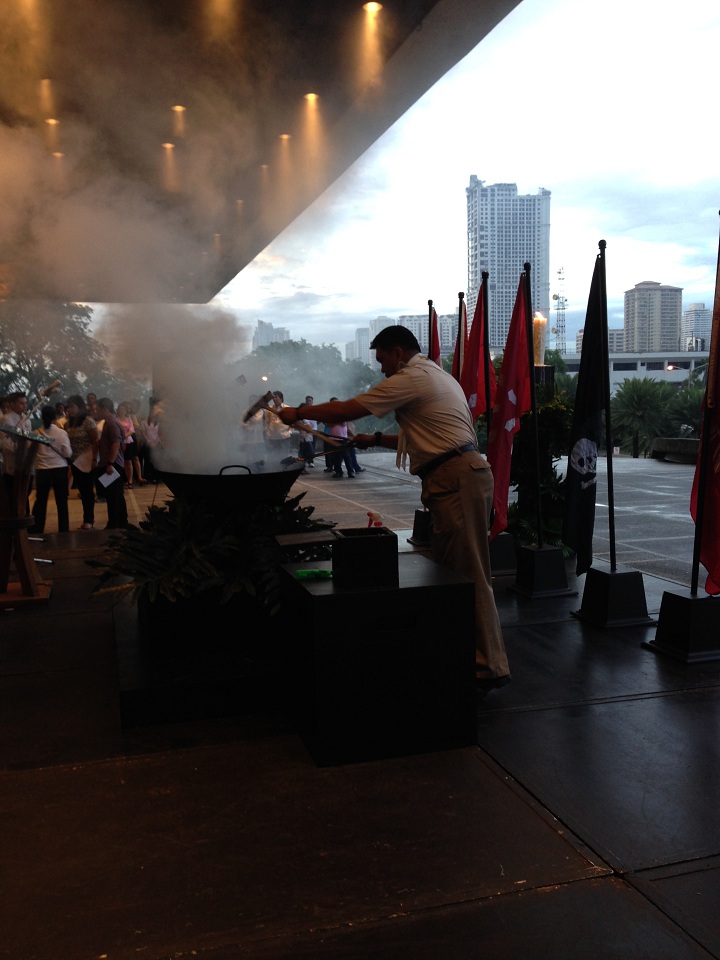Filtered By: Lifestyle
Lifestyle
CCP burns worn-out PHL flags for first time in its history
Text and photos by IBARRA C. MATEO

An old flag is displayed before it is burned.
CCP board chair Emily A. Abrera and CCP president Raul M. Sunico led the flag-burning ceremony, which was the first in the 45 years of the cultural institution.
“Republic Act No. 8491, or the Flag and Heraldic Code of the Philippines, prescribes that a flag worn out through wear and tear, shall not be thrown away. It shall be solemnly burned to avoid misuse or desecration,” said Abrera in opening the solemn ceremony.
“The law also says that the flag shall be replaced immediately when it begins to show signs of wear and tear,” she added.

A Scout collects a flag's ashes from the cauldron.
The CCP has about 100 worn-out flags in its storerooms, Sunico said in an interview after the ceremony.
“CCP is already 45 years old this month. The 100 flags statistically signify that the CCP changes flags once every six months, or uses an average of two flags annually,” he said.
The officers of the Boy Scouts of the Philippines - Manila Council (BSP), who helped the CCP organized the flag-burning rites, has requested that the CCP's remaining worn-out flags be turned over to them, Sunico added.
“The flags will be used in flag-burning rites in other institutions to introduce to them the ceremony and how to properly do it,” he said.
Evolution and procedure
During the “Huling Pagpupugay sa Watawat ng Pilipinas” rites, singers Bayang Barrios and Joey Ayala performed patriotic songs as seven flags showing the historical evolution of the Philippine emblem were waved in succession.
The flags displayed symbolized those popularized by the Bonifacio-led Katipuneros; by Gen. Emilio Aguinaldo; by Gen. Mariano Llanera (bearing a skull emblem); by Gen. Pio del Pilar; and by Gen. Gregorio del Pilar.
Among the highlights of the 90-minute ceremony was the lighting of the big black steel cauldron located at the center of the CCP Main Ramp and surrounded by two white candles and white flowers atop a dais.
Then a procession of CCP officials and employees quietly placed the worn-out flags inside the burning cauldron.
When the pieces of cloth turned into black ashes, a BSP representative collected them and put them in an urn.
Another procession was held, this time led by a Maria Clara-clad woman symbolizing “Inang Bayan,” who carried the urn up to a burial plot at the foot of the CCP flagpole.

Inang Bayan leads the burial of the urn containing the flag's ashes.
Trasga said the CCP was the third national government institution assisted by the BSP - Manila Council in flag-burning. The BSP introduced the ritual to the Bangko Sentral ng Pilipinas in October 2013 and to the Philippine International Convention Center in July 2014.
Trasga said interested agencies and institutions may contact the BSP national headquarters at 527-8319 up to 20 for assistance in proper flag-burning. — BM, GMA News
More Videos
Most Popular



